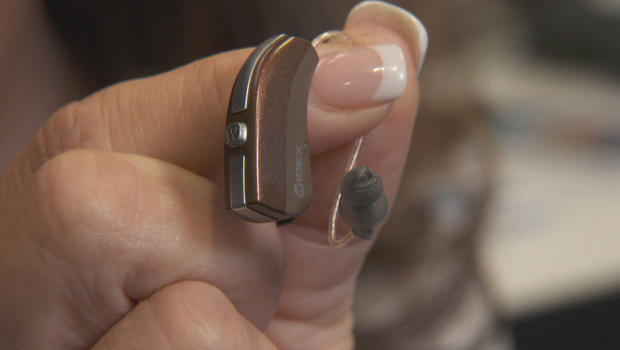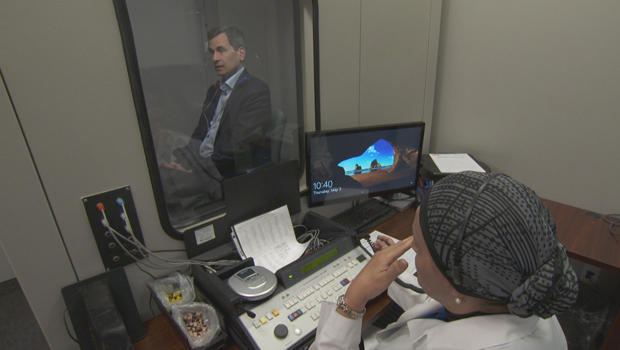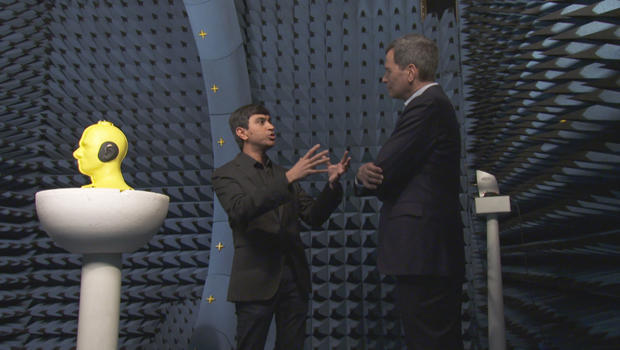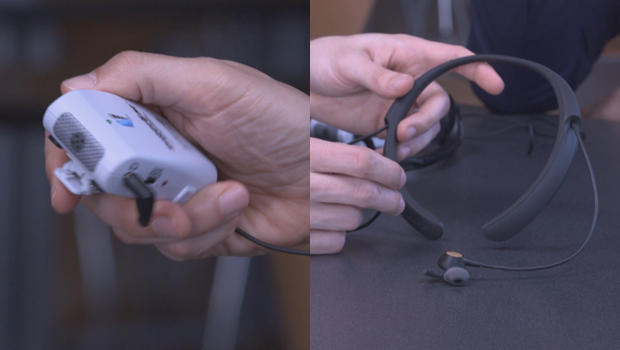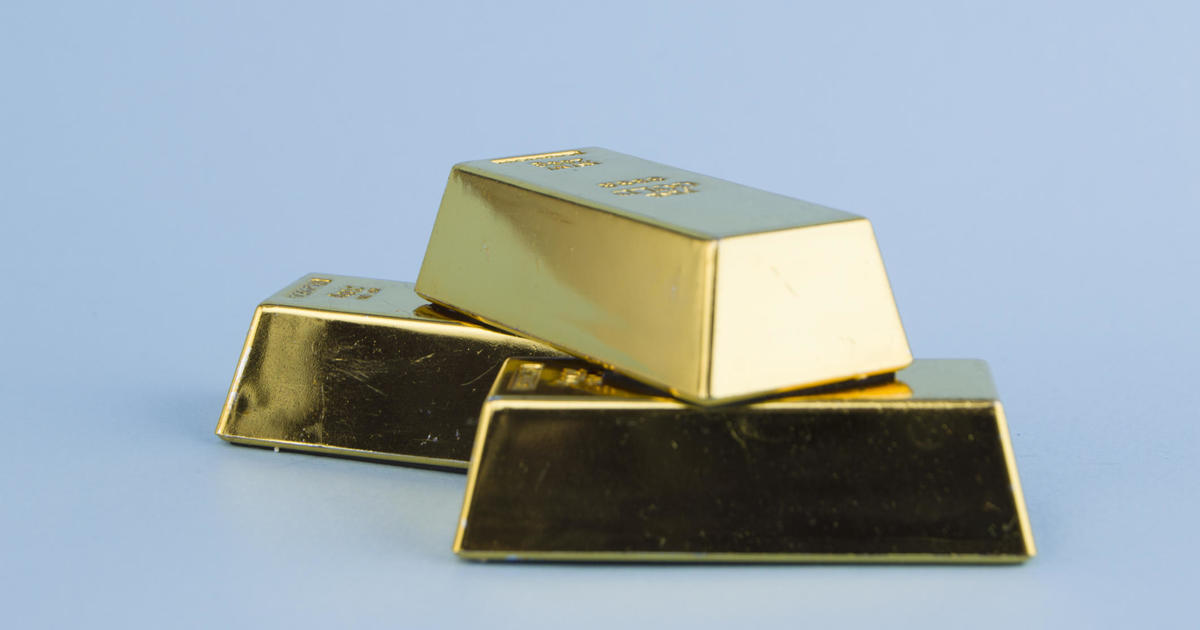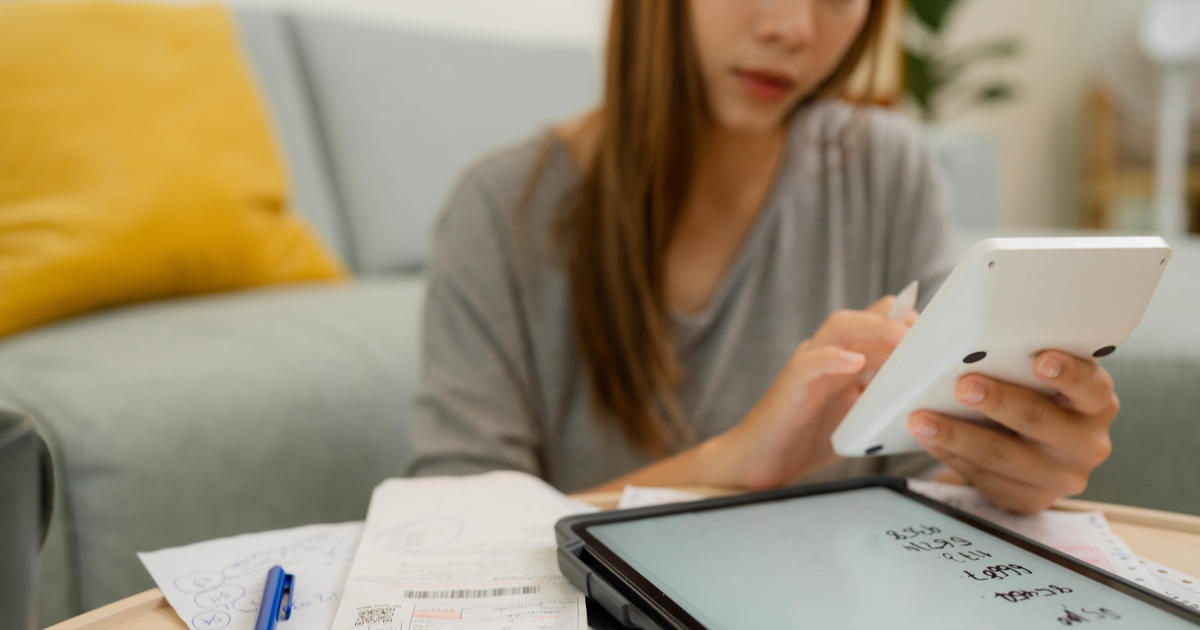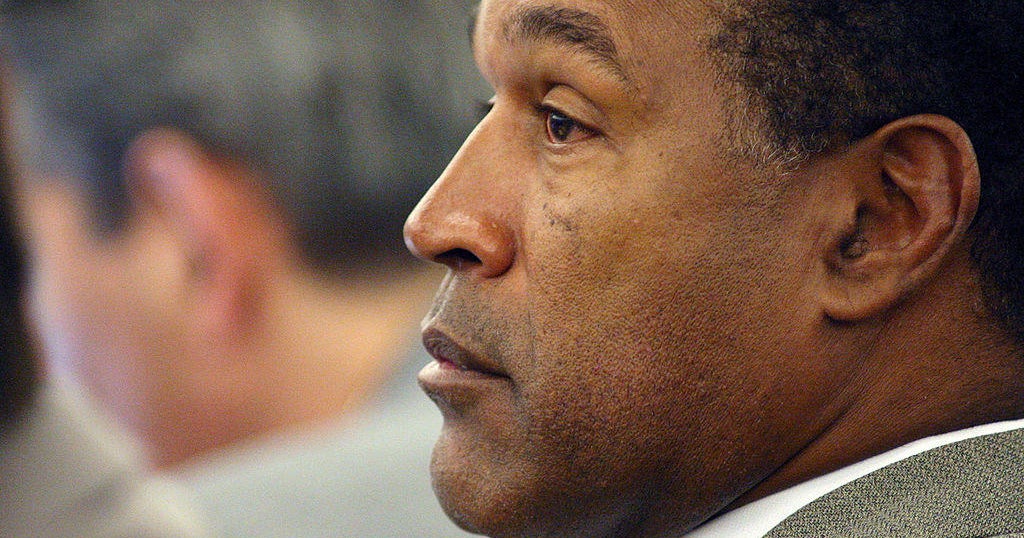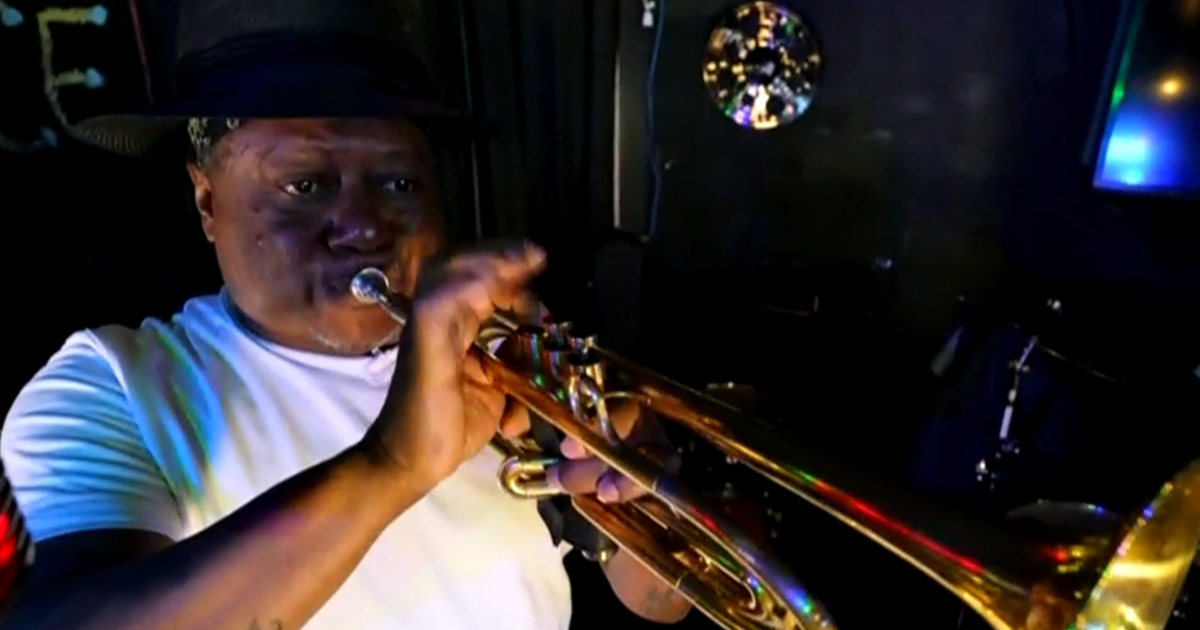Hearing aids: You ain't heard nothing yet
Originally broadcast September 30, 2018.
Meet Dick Pogue, Cleveland lawyer. He's 91 years old, he goes to the office six days a week, and he's the father of "Sunday Morning" contributor and tech critic for Yahoo Finance, David Pogue. He doesn't make many concessions to aging. About the only one David has noticed is that he wears hearing aids.
David asked, "Under what circumstances do you wear them? Movies?"
"I wear them at movies? Yes."
"And watching TV?"
"I do wear them watching television."
"Talking to mom?"
"When I'm listening to her!" Dick laughed.
Most people with hearing loss get it by getting older. Two out of three people over 70 have trouble hearing. But what's really surprising is how many of them don't get hearing aids.
"On average, about 20% of adults who have a hearing loss actually use a hearing aid," said Frank Lin, an ear surgeon and professor at Johns Hopkins School of Public Health. His research shows that hearing loss is associated with higher risks of hospitalization, depression, and especially dementia.
So, why don't more people seek treatment?
First, the price: "The average cost to get a pair of hearing aids in the United States is about $4,700, which is remarkable, right?" Dr. Lin said. "Because that basically means then for the average American, that this could be their third largest material purchase in life after a house and a car. So, it's incredibly expensive."
What's more, the majority of insurance companies don't cover hearing aids. And neither does Medicare, a major insurer for all older adults.
But cost is only one obstacle. Some people are also embarrassed to wear hearing aids. (Many don't realize how much smaller hearing aids have become over the decades.)
And some people are put off by the hassle of getting them. In the U.S., you currently can't get hearing aids without testing and consultation with a doctor or audiologist.
Today, most of the world's hearing aids are made by six companies. Only one is headquartered in the U.S., and that's Starkey, near Minneapolis.
Starkey's founder and CEO, Bill Austin, jokes, "I've been in everybody's ears!"
Like who? "Ford, Reagan, Clinton." And a pope, too.
While Pogue doesn't actually need hearing aids (yet), Starkey's team treated him to a pope-worthy fitting experience.
First, a cleaning. "You do have narrow ear canals," Pogue was told.
Then, a hearing test. Then, a molding session, for hearing aids that will exactly fit his ears. Blue liquid plastic poured into his ear canal takes about five minutes to solidify.
Technicians have to fit all the electronics into a tiny shell that will disappear completely inside your ear. Once it's inserted, it can't be seen.
Or, you can get the kind that slips over and behind your ear. They have room for a lot more features; you can listen to music from your phone or make phone calls. They even have different presets for different sonic environments, like crowded rooms.
Think that sounds fancy? You ain't heard nothing yet.
Starkey's chief technology officer, Achin Bhowmik, met Pogue inside one of the company's echo-proof testing chambers. He's adding more sensors to their hearing aids. One new model can count up your steps like a FitBit. It can even notify loved ones if you fall.
But probably the number-one technology most hearing-loss sufferers would like to have now is just the ability to understand someone talking across the table from them in a restaurant. Why can't we lick that?
"I think we are close to cutting the problem," Bhownik said. "We're going to do that by detecting, Where are you looking? Are you looking at me? Are you looking at the person over there?"
But even basic hearing aids cost an ear and a leg, and this is why: Two-thirds of the price is all of those doctor services – testing, customization, and follow-up, all bundled in that price.
But Frank Lin became convinced that people with mild hearing loss don't need all that. They might be content with something more generic that costs one-tenth as much. So, his team worked with Congress to successfully pass a new bill allowing hearing aids to be sold over-the-counter, which means that, by August of 2020, companies will be able to sell hearing aids directly to consumers. "Companies like Bose, Samsung, Apple could all enter the market now," Lin said.
He says access to hearing aids will be improved, and costs will come down.
As for the big companies making hearing aids now, "You're taking direct aim at their spreadsheet," Pogue noted.
"Yes and no," Dr. Lin said. "It's an industry, and a profession, and a practice that's been built up over the last several decades. And now we're disrupting the model. If we think hearing is so important for public health, then that's how we need to advance the field."
The new law will create a new class of hearing aids much less customized, but also much less expensive. They may resemble these devices, called personal sound amplification products, or PSAPs.
These PSAPs are on the market today, but legally they can't be called or marketed as hearing aids.
But when the new law kicks in, several of these PSAPs might be allowed to be called that, said Nicholas Reed, an audiologist at the Johns Hopkins School of Public Health.
Some of these over-the-counter devices have some pretty cool features, too, such as the SuperEar, which has a microphone that clips onto your lapel. It retails for around $80.
Then there are the Bose Hearphones, for $500. "These have noise cancellation," said Reed. He said that in tests done in a controlled environment, devices that cost several hundred dollars improved speech understanding about as well as hearing aids costing several thousand.
As you could probably guess, the big hearing aid companies say they're not as good as their products. "In a restaurant or backgrounds of noise, they just don't perform," said Chris McCormick, the chief marketing officer at Starkey.
"So, what's going to happen when people are allowed to buy hearing aids without the audiologist's services?" Pogue asked.
"The concern is people trying to self-diagnose, people trying to self-program," McCormick replied. "The products will have to be standardized. And the problem with that is, everybody's hearing is different."
Bottom line: the world of hearing aids is about to improve dramatically, both at the expensive end, and – thanks to that new law – over-the-counter.
In the meantime, if you're among the 80 percent who could use hearing aids but haven't looked into it, well, we'll give the last word to David's dad, Dick.
When asked if he could imagine his life without hearing aids, he said, "Well, I wouldn't be able to work. I mean, I couldn't go to meetings, I couldn't hear people. It would just cause me to isolate myself and be at home and very seldom go out. It would be a dramatically different life.
"I would not like it!" he laughed.
For more info:
- Frank Lin, director, Cochlear Center for Hearing and Public Health at Johns Hopkins Bloomberg School of Public Health
- Starkey Hearing Technologies
- Nicholas Reed, Johns Hopkins School of Medicine
- SuperEar (Sonic Technology Products)
- Bose Hearphones
Story produced by Dustin Stephens.
